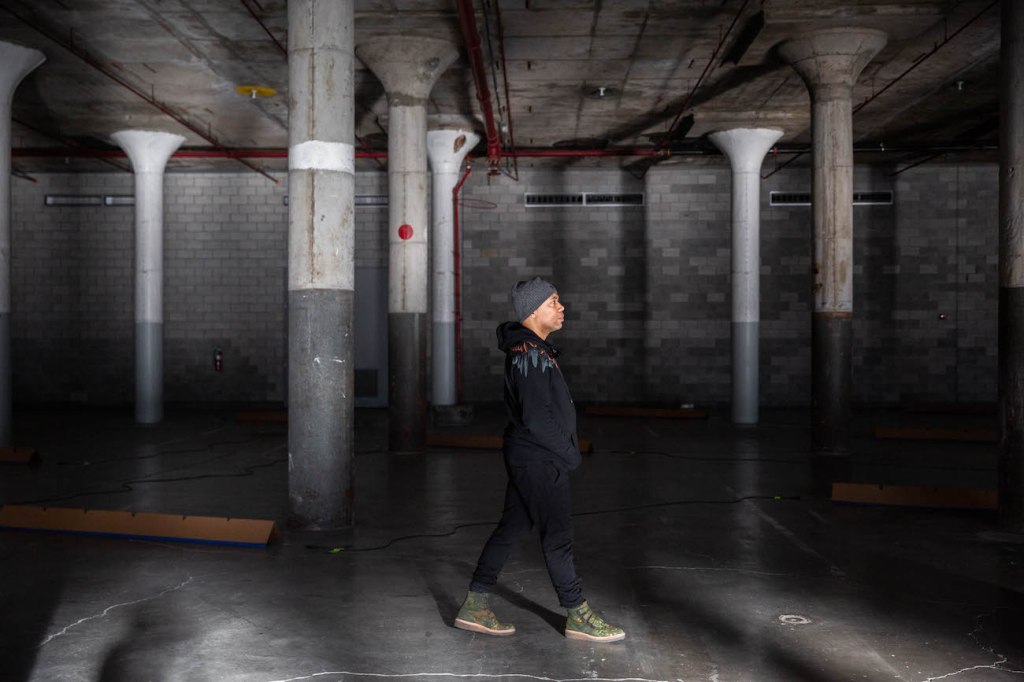[ad_1]
The spacious basement of Dia:Beacon—the museum for Minimalist art and extrapolations on its legacy in a post-industrial manufacturing plant in upstate New York—will soon be home to a sound installation by storied Detroit techno producer Carl Craig. Starting in March, the commissioned work—to be titled Party/Afterparty—will feature electronic music composed for the environs as well as visual elements to draw out aspects of the otherwise empty 35,000 square feet in the lower level’s largest gallery.
“It took five years for us to come up with something that would be not only worthy of Dia but also something that could really be a piece of me,” Craig told ARTnews of the project. The process began when curators at the Dia Art Foundation—an enterprise most often associated with sculptors like Donald Judd, Dan Flavin, and Walter De Maria—started thinking years ago of ways to mark the anniversary of the first Dream Festival, an early Dia production in 1975 that featured a program of music organized by composer La Monte Young and artist Marian Zazeela.
“We were thinking about the impact of Dia’s involvement with sound and what the next generation of that would be,” said Dia curator Kelly Kivland, who noted the foundation’s history with Young as well as sound artist Max Neuhaus, the creator of an installation that has been humming mysteriously for decades beneath a sidewalk grate in New York’s Times Square. “That led us to electronic music, and we really homed in on techno because of its attributes [owing to] Minimalist and Post-Minimalist sound and its effects today. Also there is the architectural element of potentialities in post-industrial spaces and different forms of experimentation.”
Craig—part of a fabled lineage for a legacy of techno music that was born and bred in Detroit—said he drew connections between his hometown and Dia:Beacon’s setting in a former factory that had been abandoned for years before it was transformed in an art-world destination in 2003. “I’m representing not only myself but also my background coming from the hood in the D,” Craig said. “The kind of space we’re working with at Dia, there are tons of abandoned spaces I’ve been working with my whole lifetime. The fall of the automotive industry in Detroit left all these factories that turned into party spaces—and a lot of them are still there.”
Of Beacon’s remote setting in the Hudson River Valley, Craig said, “It’s a different landscape for me and for anyone doing anything within DJ culture. But this isn’t a DJ culture show—though when people think of Carl Craig, they’re not thinking of a badminton champion.”

Eva Deitch
The sound for the installation has been composed via a mix of hardware and software—modular and analogue synthesizers plus studio programs and “stray frequencies made with oscillators,” Craig said. And though some of it will be rhythmic and made in mind of the dance floor, much of it will evoke the “afterparty” part of the title. “My experience of being on the road is that no matter how many people are in a room, you can still feel this loneliness,” said the artist, who has been traveling the planet and sometimes playing multiple gigs a night for many years. Some of the sound will signal the comedown mood that can follow a spell of clubbing revelry as well as the effects of the tinnitus he developed on the job. And all of it will commune with “a space so vast that controlling the room is virtually impossible. It’s about using what is untamable to my advantage.”
“There are some acoustic obstacles, let’s say, and things that need to be taken into consideration,” Kivland said of a concrete room with seven seconds of reverb. But the music was made for the space it will be in, and subtle visual elements will accentuate the experience too. “There is a lighting component that involves the windows, and there is an element that will allow for a dimensionless aspect of the space,” Kivland said.
Dia will release a record as part of the project, and programming during its six-month run into September will also include live performances as well as considerations of techno’s artistic and cultural significance. Otherwise, the sound will be the star.
“The music will be a sequence,” Craig said, “that changes and morphs as time goes on.”
[ad_2]
Source link

